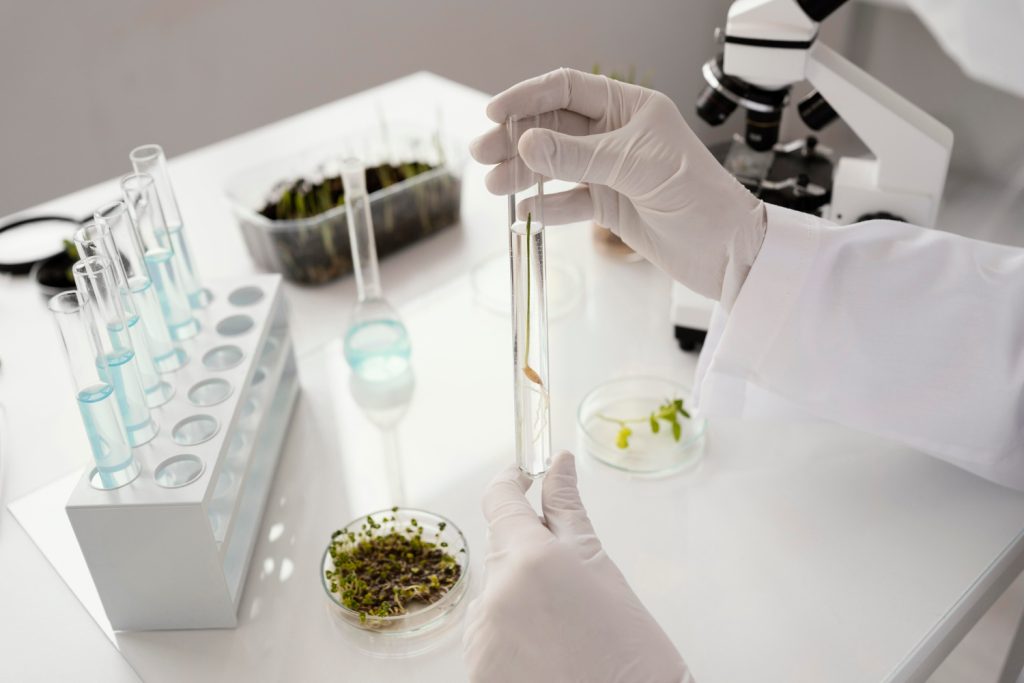Designing biotic and laboratory spaces involves unique challenges and requirements. At GC44, we understand the complexities of creating environments that foster scientific research and medical advancements. Here are some key considerations to keep in mind when planning your biotic and laboratory spaces.
1. Understand the Specific Needs
Each laboratory and biotic space has distinct requirements based on its purpose. Whether you’re setting up a research lab, medical testing facility, or biotic space, understanding these specific needs is crucial.
Key Questions:
- What type of research or testing will be conducted?
- What equipment and technologies are necessary?
- How many personnel will be using the space?
Understanding these aspects will guide the design and layout to ensure functionality and efficiency.
2. Prioritize Safety and Compliance
Safety is paramount in any laboratory environment. Ensuring that your space meets all relevant safety standards and regulations is essential to protect both personnel and the integrity of your work.
Safety Considerations:
- Proper Ventilation: Ensure adequate ventilation systems to handle chemical fumes and provide clean air.
- Emergency Protocols: Include safety showers, eyewash stations, and clear emergency exits.
- Compliance: Adhere to local, state, and federal regulations regarding laboratory safety and waste disposal.
3. Optimize Workflow and Layout
An efficient workflow can significantly enhance productivity in a laboratory setting. Consider the movement of personnel and materials when designing the layout to minimize disruptions and maximize efficiency.
Layout Strategies:
- Zoning: Create distinct zones for different activities, such as preparation, experimentation, and analysis.
- Accessibility: Ensure easy access to equipment and supplies.
- Ergonomics: Design workstations that are comfortable and reduce strain on users.
4. Ensure Flexibility and Scalability
Scientific research and medical testing are constantly evolving fields. Designing flexible and scalable spaces can accommodate future changes in technology and research focus.
Flexibility Features:
- Modular Furniture: Use modular furniture and workstations that can be easily reconfigured.
- Infrastructure: Plan for additional utilities and space to accommodate new equipment.
- Adaptable Layouts: Design layouts that can be modified without major renovations.
5. Incorporate Sustainable Practices
Sustainability in laboratory design not only benefits the environment but can also reduce operating costs and improve working conditions. Implementing eco-friendly practices is a growing priority in modern laboratory design.
Sustainable Solutions:
- Energy-Efficient Systems: Use energy-efficient HVAC, lighting, and equipment to reduce energy consumption.
- Water Conservation: Implement water-saving fixtures and practices.
- Recycled Materials: Use sustainable and recycled materials in construction and finishes.
6. Invest in Advanced Technology
Integrating advanced technology into your laboratory can enhance both research capabilities and operational efficiency. This includes automation systems, data management tools, and state-of-the-art equipment.
Technological Innovations:
- Automation: Incorporate automated systems for repetitive tasks to increase efficiency and accuracy.
- Data Management: Implement robust data management systems for storing and analyzing research data.
- Advanced Equipment: Invest in cutting-edge technology to stay ahead in your field.
Conclusion
Designing biotic and laboratory spaces requires careful planning and consideration of specific needs, safety, workflow, flexibility, sustainability, and technology. By focusing on these key areas, you can create a functional and efficient environment that supports scientific and medical advancements.
Ready to optimize your biotic and laboratory spaces? Contact GC44 today to learn how we can help you design and build state-of-the-art facilities.






